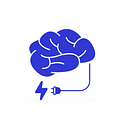Accelerated Resolution Therapy: A Revolutionary Treatment For PTSD, Anxiety, And Depression
Summary: Accelerated Resolution Therapy (ART) is a type of therapy that uses eye movements and other bilateral stimulation to help people process and resolve memories of traumatic events.
ART has been shown to be an effective treatment for post-traumatic stress disorder (PTSD), and can help people reduce symptoms of anxiety, depression, and stress. It can also be helpful for those suffering from trauma, anxiety, depression, sleep issues, self-esteem problems, and more.
Below, we take a look at what this new form of therapy can mean for you.
What is Accelerated Resolution Therapy?
Developed in 2008 by Laney Rosenzweig, a marriage and family therapist, ART came out of Rosenzweig’s experience with different types of treatment. In particular, eye movement desensitization and reprocessing (EMDR).
Rosenzweig created standardized guidelines based on different therapies, along with modified EMDR practices.
It was officially recognized as an evidence-based therapy in 2015 by the National Registry of Evidence-based Programs and Practices.
EMDR, Gestalt, cognitive behavioral therapy (CBT), and brief psychodynamic therapy (BPP) are all incorporated into ART.
By using techniques such as rapid eye-movement, exposure, imagery rescripting, and guided imagery, ART practitioners are able to change how stress-inducing images are stored in the brain.
ART works by asking an individual to recall a memory, which the therapist then helps them to shift to something more positive. They do this by employing imagery rescripting.
Research has shown that individuals using ART tend to have a faster recovery. In fact, the goal is to be able to either decrease or eliminate the client’s symptoms in one to four sessions.
Memory Reconsolidation
Using elements of cognitive therapy, such as imaginal exposure and image rescripting, individuals are able to work through unprocessed traumatic memories, and lessen the physiological sensations of those events.
This is known as memory reconsolidation, and is used to treat stress and anxiety related disorders.
As emotionally-based memories are fluid and change constantly, ART is able to take advantage of this in order to recode fear-based memories.
In other words, ART can change the way your brain perceives the memory, moving it from a place of trauma to a positive-or at least neutral-position.
Research has shown that the new positive feelings attached to the memory are still present, even 4 months after treatment has ended, and up to a year later.
Smooth-Pursuit Eye-Movements
Smooth-pursuit eye-movements are repetitive, gentle movements of the eyes, back and forth. This kind of eye movement triggers a relaxation response in the brain.
The way ART therapists employ these movements are by gently and smoothly moving their hand back and forth in front of the client.
By keeping their head still and only tracking the movement with their eyes, this engages smooth-pursuit eye movements.
Read the entire article here: https://www.psychnewsdaily.com
